


 Culture & Adventure
Culture & Adventure



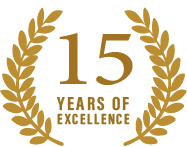
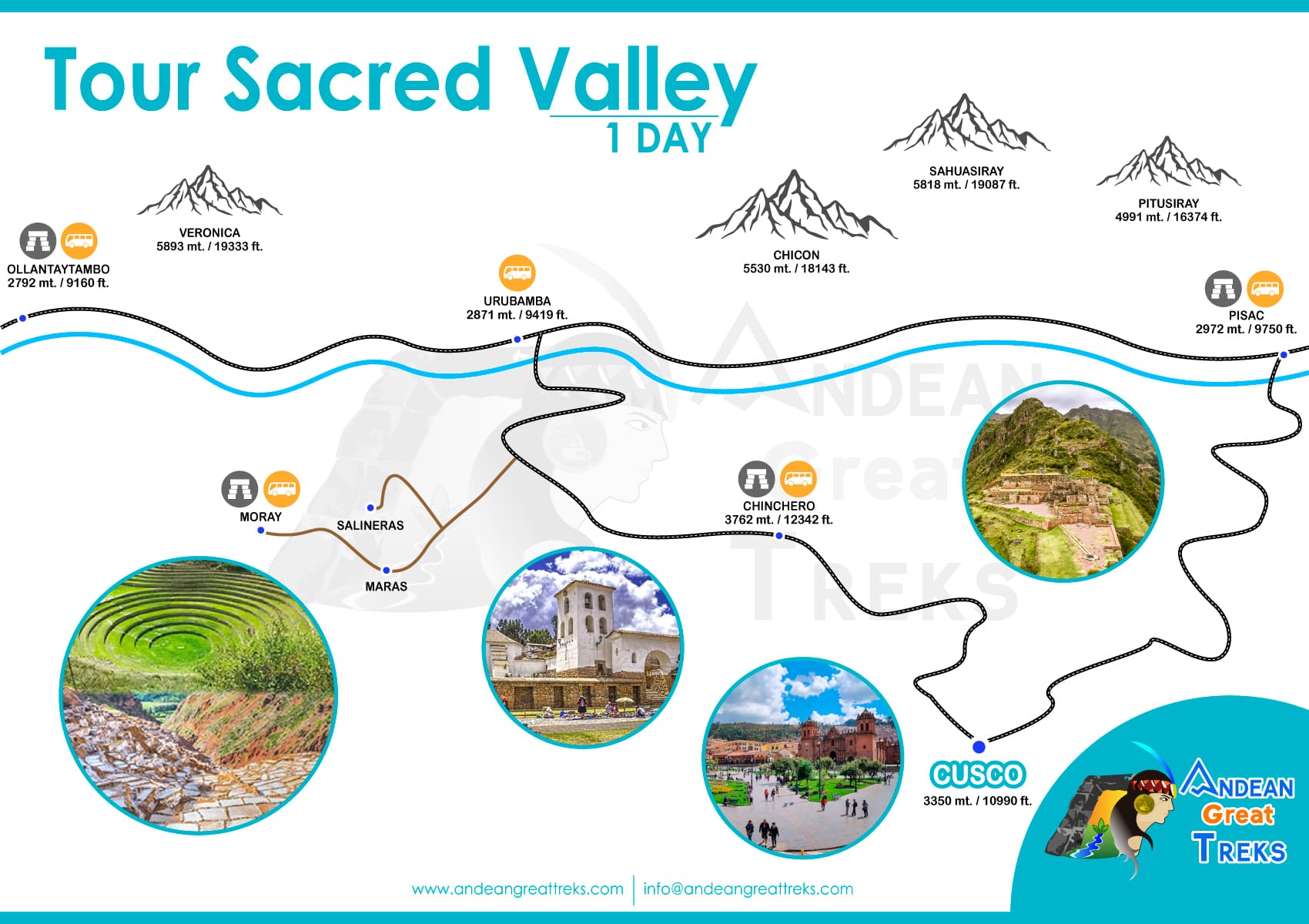 trip overview
included
trip highlights
activities
accommodations
itinerary
packing list
faq
essential trip information
best season to travel
price & availability
reviews
Reserve Online
trip overview
included
trip highlights
activities
accommodations
itinerary
packing list
faq
essential trip information
best season to travel
price & availability
reviews
Reserve Online
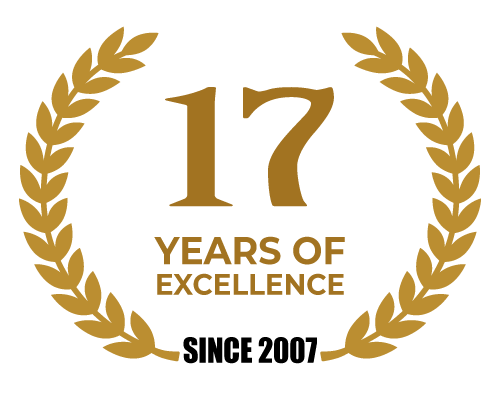 CREATING AUTHENTIC TOURS IN PERU
CREATING AUTHENTIC TOURS IN PERU

Tour Sacred Valley of the Incas is an attraction that you can not miss if you visit the city of Cusco. The most famous artisans of Peru, and sacred mountains of the Incas. In its route a great diversity of Inca ruins of different styles and cultural value can be appreciated. The first place to visit is the Chincheros site, famous for its typical market and textiles. Then you will meet Moray’s agricultural experimentation laboratory. In the afternoon we arrive at the mythical town of Ollantaytambo, and to finish we visit the agricultural platforms of Pisac.
The tour starts with pick up from your hotel at 6:30 am, then we head to the first Inca attraction. CHINCHEROS is an urban center that still has walls and temples of the Incas, you can also see the 16th century colonial temple. Chinchero is known for its weavers who in their homes will be able to teach the techniques and customs inherited from the ancestors.
Afterwards we moved to the MORAY agricultural experimentation complex, it is a system of terraces, whose purpose was the adaptation of new tropical species to the Andes. Near this place is another very famous attraction SALT MINES OF MARAS, this place is open all year round, was used since the Inca times as a natural source of salt, there it is possible to learn about its extraction process and uses. In the route to the sacred valley you can enjoy a beautiful landscape, dominated by the snowy mountains of Vilcanota, the most important are CHICON, PITUSIRAY, SAWASIRAY, VERONICA.
Continuing the route we arrive at the living Inca city of OLLANTAYTAMBO, this place does not change in more than 500 years, still maintains the urban designs and traces of the Incas, in this place we will visit the temple of the sun, agricultural sector, temple of the moon, Ceremonial fountain, and the hill TUNUPA.
At noon we return to Urubamba where we will have a stop of 1 hour to have lunch, in this city there are many options of menu or buffet.
During the afternoon we will visit the archaeological complex of PISAC very famous for its agricultural terraces, and the largest Inca cemetery in South America, in this town you will also be able to know more about its history and very beautiful crafts. Another attraction is the typical market where many farmers come from various regions bringing their products such as fruits, vegetables, meat, animals, etc.
After having enjoyed the best of the SACRED VALLEY we will be back in Cusco at 7:00 pm.
 warm jackets
warm jackets
 Hydration bladder
Hydration bladder
 wool socks
wool socks
 camera
camera
 scarf
scarf
 first aid kit
first aid kit
 hiking shoes
hiking shoes
 Dry bags
Dry bags
 Trekking Poles
Trekking Poles
 sun cream
sun cream
 Snack
Snack
 sun hat
sun hat
 bathing suite
bathing suite
 rain coat
rain coat
 Sandals
Sandals
 insect repellent
insect repellent
 Passport
Passport
 Down Jackets
Down Jackets
 toilet paper
toilet paper
 daypack
daypack
 Wool cap
Wool cap
 head lamp
head lamp
 gloves
gloves
 sun glasses
sun glasses
 cap
cap
 extra cash
extra cash
 Trekking pants
Trekking pants
Located just 30 km north of the ancient Inca Capital of Cusco, the Sacred Valley of the Incas was formed by the Urubamba River that cuts through the valley. The Sacred Valley, or as it is known in Peru ‘Río Urubamba Valley’, was an important site for the Inca Empire and remains a hugely popular site for tourists today.
Anyone who has traveled to Machu Picchu would have probably visited the Sacred Valley. The valley is often a good place for tourists to begin their Machu Picchu adventure as the altitude is not as high as it is on the Inca Trail or at Cusco.
Standing at 3,400 metres, landing in Cusco often brings on altitude sickness and a popular way for tourists to avoid this and acclimatize properly to the altitude is to descend down into the Sacred Valley for a day where the altitude is much lower (average 2,400m).
Tucked away amidst formidable foothills, the valley is home to a number of isolated villages and colonial towns. In ancient times, the surrounding hills acted almost like a buffer against the violent Andean jungle tribes that would often raid the highlands.
Although there is evidence to suggest the valley was inhabited as far back as the Stone Age, it was only farmed by the Incas. In fact, even today the valley is an important agricultural area and many forms of crops are still grown there and supplied to Cusco.
Because of its naturally rich soil, many Inca people settled in the valley and started producing maize on a large scale. The number of archaeological Inca remains still visible today attest to this fact.
The highland climate of the Sacred Valley has rather consistent temperatures throughout the year. Atop high mountain summits, like Salkantay, temperatures are cold enough to sustain snow year round. The climate is much more temperate far below on the valley floor where towns such as Pisac, Urubamba and Ollantaytambo reside.
Dry Season Vs. Rainy Season
Distinct to Peru’s Andean region, the Sacred Valley has a dry and rainy season.
The dry season is from April to October.
The rainy season is from November to March.
Peak travel season in the Sacred Valley coincides with the dry season: June, July, and August. During this time, the weather is usually sunny and conveniently coincides with the summer months for travelers coming from the northern hemisphere. Given the high demand for services and limited Machu Picchu train and entrance tickets, it’s best to plan your trip early to ensure specific date availability.
Low season coincides with the region’s rainy season: December, January, February and March. Rainfall and storms are unpredictable, so flight delays going in and out of Cusco are more common. However, there are perks to traveling during the low rainy season. Sites tend to be less crowded and the Sacred Valley Mountain are beautiful shades of green.
It is called this way to the extreme of the extensive valley of Urubamba, between the towns of Pisac and Ollantaytambo, near to city of Cusco.
The valley is characterized by very special conditions, such as an excellent climate, very fertile lands and the waters of the sacred river of the Incas, Vilcanota (Quechua voice, sacred or wonderful thing), upstream in the town of Urubamba, changes its name and is called Urubamba river.
It is possible to appreciate and magnify the high technological development that the Incas achieved in agriculture through systems of andenerías (set of land terraces in staggered form on the mountains to be used in the sowing) that today are in full production, accompanied of sophisticated designs and works of hydraulic engineering that they used for their irrigation. Also noteworthy are the centers of worship to the Pachamama (mother earth).
Today, every town in the Sacred Valley of the Incas has the fusion of the Inca and Spanish architectural style. The wealth of its people in its folklore and crafts, its way of life, its clothes, make it a place that will leave you unforgettable memories.
The history of the Sacred Valley weaves closely together with the Incan capital city of Cusco. The Inca Empire rose to power during the 14th century and expanded across ancient Peru and into Ecuador, Bolivia, Chile, Argentina and Colombia. However, all trails led back to the Inca capital city of Cusco where the king resided. The surrounding fertile fields of the Sacred Valley served as the civilization’s breadbasket, yielding varieties of fresh grains, fruits and vegetables. Skilled Inca stonemasons also constructed religious temples and outposts in the valley, which today you can visit at archaeological sites in Pisac, Ollantaytambo and Chinchero.
Before the Inca, the Sacred Valley was home to the Wari Culture around 500 to 1100 AD approximately. The Inca started inhabiting the valley around the 12th century, with Manco Capac as the first Inca king. The Spanish Conquest of the valley began in 1531 when Francisco Pizarro arrived with 168 soldiers. In 1535 AD, Manco Inca organized a rebel force to try to overthrow Spanish rule, and led the Incas’ greatest military victory over the invading Spaniards in Ollantaytambo.
Despite some victories, in 1572 the last Inca king, Tupac Amaru I, was captured in Vilcabamba and taken to Cusco. Upon the orders of the Viceroy Francisco Toledo, Amaru was beheaded in the city’s main plaza in front of a crowd of thousands. During the 16th-18th centuries, Cusco became an economic node of the southern Andes as well as the frontline for the religious evangelization and acculturation of indigenous populations. During this time, many churches are erected in the Sacred Valley.
In 1911, Yale historian and professor Hiram Bingham arrived at the ruins of Machu Picchu. National Geographic chronicles Bingham’s expedition and turns the world’s attention to this remote Andean region of Peru. In 1999 Peru Rail began offering tourists train service to Machu Picchu. In 2004, Potato Park, or Parque de la Papa, was established to protect hundreds of native potato species and agrobiodiversity in the Sacred Valley region. Today, tourism in the Sacred Valley is on the rise, but local movements and projects are at work to help preserve ancient Quechua traditions.
The traditional access point to the Sacred Valley is Cusco, so you need to get there first. Luckily, Cusco is well-connected with all major cities in Peru.
Buses run to Cusco regularly from Lima, but it’s actually better to fly in from Lima to save time.
From Cusco, you can either take an organized tour to Sacred Valley or public transport. The only downside of taking public transport is that every destination in Sacred Valley has a different bus station.
So you always have to figure out which bus station is the right one. Also, when pressed for time, it is better to take a tour and see more places in one day as visiting all sites separately would take you much longer.
The Sacred Valley is a wellspring of important archaeological sites and beautiful natural landscapes. A classic tour of the Sacred Valley takes you to some of the most impressive ruins in the area, including the Pisac Archaeological Park and the Ollantaytambo Fortress. The Pisac ruins consist of ceremonial baths, residential quarters and the largest Inca cemetery. They are stunning in that they are perched atop a mountain that overlooks the village and its sweeping terraces where the Inca grew their crops. Ollantaytambo Fortress is another magnificent site. It is one of the most sophisticated examples of Inca architecture and town planning, and the site of the Incas greatest defeat against the Spanish.
The Maras Salt Pans and concentric terraces of Moray are two lesser visited examples of Incan ingenuity in the Sacred Valley. Though unrelated in purpose, the sites are near neighbors in a remote region that’s not served by public transportation. For this reason, Maras and Moray ruins are often bundled together on a Sacred Valley tour. Scholars believe the Moray terraces once served as an elaborate agricultural laboratory for the Inca; each terrace having a unique microclimate. Today, the mountainside salt pans at Maras, started by the Wari culture and expanded by the Inca, are owned and operated by local residents. You can get to this site by car, foot, bike or even horseback.
White water rafting in the Sacred Valley is an adrenaline-packed adventure! On a one-day trip, get picked up at your hotel and driven to the starting point along the river. Gentle parts of the river at the beginning of the journey builds to more fun rapids. After about two hours on the river, you’ll enjoy lunch and then be driven back to your hotel. Rafting trips run along different upper and lower sections of the Urubamba River. Rapids along these sections of the river vary from introductory to class II and III plus.
Stand up paddle boarding is a fun way to play on the water and get exercise. Enjoy a half day stand up paddle tour in the Sacred Valley to placid Lake Piuray near the town of Chinchero, about a one-hour drive from Cusco. It’s a great water sport for all ages and athletic abilities! To get started, your guide will demonstrate basic paddling techniques and fit you with the proper equipment. Then set out to paddle and explore along the lake shores while taking in the surrounding natural beauty.
In the Sacred Valley, halfway between Urubamba and Ollantaytambo, exist a series of professionally operated zip lines that you can visit on a full day tour. Climb a series of steel ladders and cables – called Via Ferrata – up a steep rock face. At the summit, you reach the different zip lines ranging from 300 to 1500 ft (100 to 500 m) in length that you ride down. The Via Ferrata requires a lot of physical exertion, so folks who take part in the activity should be in good physical condition and had time to adjust to the altitude.
Want more adventure? Get your adrenaline pumping on a full-day ATV/Quad or motorcycle tour. While riding off-road in the Sacred Valley, you and your guide will make stops at key landmarks. Don’t forget to bring your sunglasses, sunblock and a jacket for the ride! Contact our travel experts for information about the best motor tour for you and your travel companions.
The Sacred Valley is a mountainous playground filled with world-class hiking trails. The classic 4-day Inca Trail to Machu Picchu is hands down the most sought after trek in Peru. But hiking in the Sacred Valley doesn’t have to be a multi day adventure. Day hikes in the region are great alternatives for travelers with limited time. There are day hikes that can take you to Pisac ruins, Ollantaytambo ruins or Huchuy Qosqo ruins. There are also hikes to natural splendors like Trail from Chinchero to Urquillos.
Any trek in the Sacred Valley is bound to be beautiful, why not make it adorable as well? This is a 3-4 hour hike that opens your eyes to the role that llamas play in daily life in the Andes and what the Llama Pack Project is doing to help local families thrive. Start on a trail 15 minutes from the quaint town of Urubamba and stroll uphill to find a spot for the llamas to graze. Enjoy a picnic against an incredible mountain backdrop and then begin the descent. This walking tour covers 1 mile and is a perfect option for families.
In Quechua, Pachamanca means “earth cooking pot,” and is the epitome of traditional cooking in the Andes. This culinary tour gives you a front row seat to how the ingredients of this special dish, featuring a variety of vegetables, meat, and potatoes wrapped in banana leaves, are prepared and then buried underground, cooked to perfection over hot stones. Afterwards, enjoy your Pachamanca feast. This is the most unique and special culinary experience you can have during your time in the Andes.
Join in a Pachamama Ceremony, or an “Offering to Mother Earth.” Among the Andean people, the Pachamama, or Mother Earth, is one of the most revered and honored deities. During this ceremony, a shaman from a local village prepares a “despacho” cloth with various items to offer the earth goddess – chief among them the sacred coca leaves. Participants sit in a semi-circle around the “altar” to make offerings as well and give thanks for the years’ abundance. This ceremony is an example of the traditional Andean idea of “ayni” or reciprocity with the mother earth to restore balance.
You need to a car from Cusco via Pisaq, via Chinchero, or Huaroncondo. Depending on where do you want to go, you need to choose one of the routes.
The Sacred Valley is a must-see place in Cusco. You need to take a day or 3 days to explore these beautiful Inca Sites and local markets.
If you plan to visit The Sacred Valley of the Incas and then take the train to Machu Picchu, this is a great idea. You must arrive in Ollantaytambo and go to the train station to board the trains to Aguas Calientes town (also known as Machu Picchu Pueblo)
Before going to Machu Picchu, whether on a hiking tour or by train, we recommend 1 day in Cusco and 1 day exploring the Sacred Valley. This time will also help you adapt to the altitude as you rest for the big trip to Machu Picchu.
In an organized group tour to the sacred valley, there are short visits to each attraction, but enough to take the best photos at each archaeological site. Since if we wanted to walk all the archaeological sites completely, we would have to spend a full day for each attraction, which in a group tour is not possible for the best use of your time in Cusco, spend in a single day all the remains archeological in just one day.
An alternative option where you can visit the ruins of the Sacred Valley of the Incas more calmly is to plan individual excursions to each attraction, on different days with a private tour.
Our company works with vans of 15, 20 seats. And if they are large groups we have buses with up to 30 seats.
They all have their permits from the Ministry of Transport, and active accident insurance. The drivers have the highest preparation to operate tourist service vehicles. Almost 90% of the route is asphalt, only when you visit the ruins of Moray and salt mines of Maras, is the route gravel. All seats are reclining for your comfort. They also have air conditioning.
In case you hire a private tour to the sacred valley, we will provide you with the most comfortable vehicle just for you and your friends or family.
Andean Great Treks works with the best tourist restaurants in the Sacred Valley circuit. Most of them are located half way through the city of Urubamba. Our tourist restaurants offer you a buffet lunch with many options, from salads, soups, main dishes, desserts. That they are prepared by the most qualified chefs in Cusco, if something is going to leave you a good memory apart from its beautiful landscapes in Peru; is its gastronomy, since our country is considered one of the best culinary traditions in the world. This distinction is due to the fusion of flavors and styles, as well as the ingredients that this wonderful country of Peru has.
If you have a special diet, don’t worry, our guides will be able to recommend the most suitable dishes for you.
Andean Great Treks works with the best guides of the Sacred Valley of the Incas, who have been working on this noble task of informing and guiding our visitors from all over the world, for more than 15 years. Each route guide is unique, since they were trained in each discipline of the Cusco guide schools. We have archaeologists, ethnohistorians, archaeoastronomers, biologists and tourism graduates. In fact, a very outstanding characteristic of our guides is their love and passion for their work, this is reflected in each smile and curious information that they will give you to brighten up your vacations in Peru.
For the Sacred Valley tour it is recommended that you take an approx. of 200 soles, to buy some handicrafts and food.
But if you would like to have more cash, there are ATMs where you can get more bills, in the sacred valley they are located in Ollantaytambo, Urubamba, Calca and Pisac.
It is not recommended to carry dollars, since the change is less outside of Cusco.
During the tour to the Sacred Valley of the Incas you do not walk much, the archaeological site that has the most stands is Ollantaytambo. Since to go up to the temple of the sun you have to climb more than 500 steps, if you are not used to demanding physical efforts like this. It is best not to go up to this attraction, but only to walk around the Inca precincts that are in the lower part, such as the baths of the princess, or the temple of the condor.
To go through the complete tour of the sacred valley, you must leave the city of Cusco at 6:30 am. The first attractions to visit are Chinchero, Moray and Salienras de Maras. Lunch will be in the city of Urubamba, at noon. In the afternoon we visit the ruins of Ollantaytambo, the last place is Pisac. The tour ends in the Cusco square at 7:00 p.m.
The topic of tips is quite personal, since if you liked the work of your guide, during the tour to the sacred valley, you can give him the amount of money you like. This gesture is highly appreciated by the guides, since it is like an assessment of their work.
Famous for its pre-Colombian agricultural terracing, this colonial village is a great overnight stop to escape the crowds in the city of Cusco, just a 40-minute drive away, with a small but enticing selection of hip restaurants and hotels.
Most come here for the famous Sunday market in the town plaza, a great place to buy knitted alpaca wool clothing, ceramics and finely wrought silver. The village almost bursts at the seams as foreigners and local street vendors crowd the narrow cobbled streets.
Yet just a fraction of visitors ever make to Pisac’s greatest claim to fame: the hilltop Inca fortress towering over the village.
The fortress includes stone water channels and what archeologists believe was an Inca bathhouse. The summit is a small triangular plateau featuring dazzling views and a kind of Inca altar made from solid granite called an intihuatana or “hitching post of the sun.”
A road actually leads up the rear side of the fortress, allowing visitors to arrive by car, taxi or bus and then explore the site.
However, as with most things Inca, the best way to appreciate Pisac, at least for those feeling energetic and unafraid of heights, is by donning walking shoes and ascending by foot from the village square below.
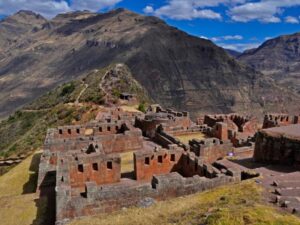
The walk up the original narrow stone staircases is steep and typically takes a couple of hours. The mountain sun can also beat down. But the views of the village below, the terracing and the valley beyond make it thoroughly worthwhile.
8:30AM-4:30PM (Monday to Sunday)
Depending on what time you start the day and your interest level, you can make the drive to the town of Pisac, which will add about an hour or so of driving time plus the amount of time spent in the town.
The main draw here is the artisans market that has every type of art piece you can imagine. From colorful clothing to beautiful pottery, Pisac will have it all.
If you are here on a Sunday you will get to see the more authentic market where locals sell their fruits, veggies, animals and all. The everyday market has tons of clothing, jewelry, pottery and the like.
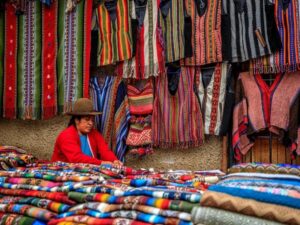
Located 30km from Cusco, the small village of Chinchero sits high atop the plains of Anta at 3,762 metres. The village boasts incredible views across the region with three of the major mountains in the region dominating the skyline – Cordillera Vilcabamba and the snow-capped summit of Salkantay.
Known locally as the “birthplace of the rainbow,” Chinchero is another picturesque colonial village renowned above all for its intricate traditional textiles.

Life in Chinchero generally moves at a slow pace. But on Sunday the town hums with activity during its popular local market. Vendors sell locally grown produce, artisan goods, and most notably, handwoven blankets, ponchos, belts, and rugs. Andean weaving has been practiced in the Sacred Valley for generations, but no town celebrates this centuries-old tradition more so than Chinchero.
Entrance to the main plaza and the Inca ruins at Chinchero requires an admission ticket. To one side of the plaza, Inca stone structures and agricultural terraces sweep down the hillside. On a clear day you can see Apu Salkantay, a famed Inca peak, off in the distance. A white 16th century church built on the stone foundation of a once Incan structure boasts tall ceilings and beautifully painted walls.
Chinchero is far less touristy than Pisac and Ollantaytambo. But it looks like this may soon change. To meet the growing demand of people visiting Machu Picchu, the construction of a new airport in the Sacred Valley near Chinchero is underway.
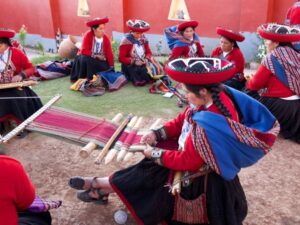
Ollantaytambo is a small town with very big attractions. Shortly after noon the town turns into a lively hub as the first travelers arrive. After visiting the Inca Fortress, browse the souvenir shops or relax at a local cafe and admire the Andean scenery surrounding you. There are some very unique and memorable things to do in Ollantaytambo.
The well preserved archaeological site at Ollantaytambo is built along the slopes of a narrow mountainside. Stone steps up a terraced-laced hillside lead to the impressive main complex. The panoramic views at the top are a photographer’s dream!
The train station in Ollantaytambo is an important transit point for travelers taking the train to Machu Picchu. Since there’s not a direct road that goes all the way to the famous citadel, Ollantaytambo is quite literally the end of the road in the Sacred Valley.

This village is where most travelers from Cusco to Machu Picchu jump off the bus and on to the train. Its grid of cobbled streets is also the finest surviving example of Inca urban planning while the village was the scene of a rare and short-lived Inca victory over the Spaniards.
It was here, in 1536, that a force of Conquistadors led by Francisco Pizarro’s rebellious younger brother was showered with arrows and eventually routed after the Incas used their irrigation system to flood the valley floor, bogging down the horse-riding Spaniards.
The narrow streets can jam up with buses during the morning and afternoon rush hours to and from Machu Picchu but the village is pretty quiet for the rest of the time. It’s also home to two stunning Inca ruins, including another terraced fort.
The huge walls are impressive but so too, is the large Inca “shrine” carved into the rock on the lower far right of the site as it blends ethereally with the stone’s natural features.

The only place in the Sacred Valley, which is not a ruin, are salt mines in Maras, but it still has a connection with the Incas, who used this place to mine the salt more than 500 years ago.
Nowadays, there are still thousands of salt ponds belonging to hundreds of families who live nearby.
Traditionally the salt mines had been available to any person wishing to harvest salt; the person had to be a member of the community and the size of the pond he got depended on the size of the family. Despite the fact that the salt mine is still in use and it is possible to buy the salt in the nearby shops, today the principal source of income is tourism.

Like an amphitheater. That’s also what scientists at first thought when they discovered Moray Ruins; that Incas probably played a theater here.
Although terraces of Moray Ruins have a circular shape, they had a different purpose.
It is not a secret that Incas were geniuses in agriculture and plant cultivation, and nowadays, it is believed that they used those ruins as an agricultural laboratory.
Each level of the terraces has a different temperature, different microclimate, and the design and orientation to the sun suggest that Incas experimented with plants and crops here.
Experiments have also shown that the soil comes from several Peruvian regions, and although this region of Peru suffers from flooding in the rainy season, Moray Ruins never flood.
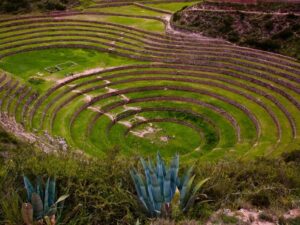
There is something about pausing during your time in the Andes that allows you to embrace the wonder of being there. And there is no better place to pause than in the Sacred Valley of the Incas. The superior amenities of these Sacred Valley luxury hotels – such as relaxing spa services, fine dining and stunning natural surroundings – make each property a true gem.
Tucked majestically between Cusco and Machu Picchu, the Sacred Valley is renowned for its vibrant local markets, adventure excursions, impressive Inca sites and unparalleled natural beauty. While there is an exciting array of tours and experiences to keep you on the go, it is important to schedule time to slow down and luxuriate in the landscape. Experiencing the Sacred Valley at a slower pace, while staying at a premier hotel, provides the opportunity to unwind, connect with your travel companions and treat yourself to deep relaxation.
Tucked in a valley of the Andean countryside, Hacienda Urubamba by Inkaterra is a Spanish-style estate with Inca decor throughout. The Casa Hacienda main house and stand alone Casitas offer opulent lodging with panoramic views of the surrounding mountains and meadows. Here you can immerse in the local charm with a book from your private porch. Or, you can visit the earth-to-table restaurant, wander through the healing garden and enjoy a rejuvenating spa treatment. There are also excursions included in your stay that allow you to fully take in the natural landscape. This is a PFL favorite when it comes to Sacred Valley Luxury Hotels.
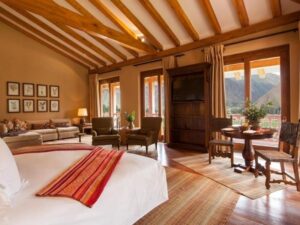
HACIENDA URUBAMBA HIGHLIGHTS
Flanked by mountains and set on the banks of the Urubamba River, guests of Belmond Hotel Rio Sagrado enjoy luxurious accommodations and a privileged location. The sandstone-orange main house and free standing structures for the villas and suites are sprinkled throughout the property – akin to a small Andean village. Sit in the gardens beside the rushing river, dip into the climatized swimming pool, enjoy local fare at the elegant restaurants or join a traditional Andean ceremony at the Mayu Wilka spa.

RIO SAGRADO HIGHLIGHTS
Tambo del Inka, a Luxury Collection Resort & Spa, is the first hotel in the Sacred Valley to be granted the prestigious LEED (Leadership in Energy and Environmental Design) certification. The picturesque hotel is located on the banks of the river. It offers amazing epicurean experiences as well as spa and pool to unwind. The well-appointed rooms and suites are adorned with sliding glass doors, marble bathrooms and warm Andean design accents. Also, as a plus, Tambo del Inka is the only hotel with a private train station offering daily service to Machu Picchu.
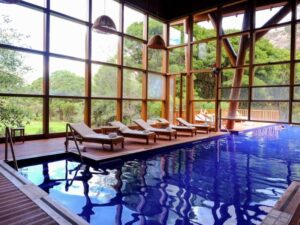
TAMBO DEL INKA HIGHLIGHTS
Hotel Sol y Luna offers all the services you need to relish an extended getaway in the Sacred Valley without ever leaving its sweeping 37 acre (15 hectares) property. The hotel is part of the prestigious Relais and Chateaux Collection, an association of luxury hotels that span 60 countries on five continents. At Sol y Luna, each of the distinct casitas is a private sanctuary. They are constructed of local stone, and decorated with original pieces of Peruvian folk art. Premium Casitas feature a wood-burning fireplace, floor heating, and jacuzzi on a private garden terrace – an idyllic spot to soak in the stunning scenery.
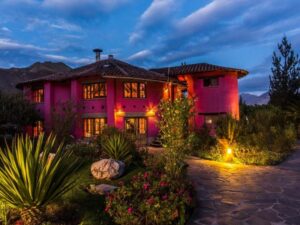
SOL Y LUNA HIGHLIGHTS
This award-winning luxury hotel is embedded in the spectacular Sacred Valley landscape with design flourishes reminiscent of the times of the Inca. In fact, Explora Valle Sagrado is located just beside an ancient corn plantation and directly facing the majestic Andes. The standard rooms and guest suites hold a simple elegance and have views of the fields, valleys and mountains. Each room is complete with a private bath with a jetted tub, robe and slippers, heating and local infusions. The experience is complete with access to the onsite Spa Pumacahua Bath House and a restaurant with a menu developed by world-renowned Peruvian chef Virgilio Martinez.
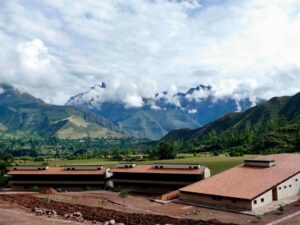
EXPLORA HIGHLIGHTS
Aranwa Sacred Valley resides on the sweeping property of a 17th century hacienda overlooking the Urubamba River. Each of the deluxe rooms and suites have a terrace or balcony and a private restroom with a jacuzzi bathtub. We consider this hotel a basic 5 star, but is still an excellent place to relax and renew. According to Peru for Less’ Melissa Dreffs, “It has everything that is expected of a 5-star but it is not quite as impressive as the other 5-star hotels in the area. However the nice part is that is reflected in the price as well; so Aranwa is a great choice for those who want the services of a 5 star without the soaring price tag.”
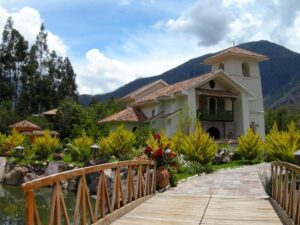
ARANWA HIGHLIGHTS
This 4 star hotel has grounds as stunning as any 5 star hotel on our list, but more basic. Located in the lush countryside of the Urubamba Valley, visitors of Casa Andina Valle Sagrado can marvel at the panoramic mountain views and wander the landscaped gardens where adorable alpaca residents wander. The guest rooms, suites and villas come with a balcony, cozy robe and slippers, and regional design accents that round out your luxury experience in the Andes. The full service spa, Alma Bar and Restaurant, and onsite planetarium are excellent options to explore during your stay.

CASA ANDINA PREMIUM HIGHLIGHTS
For a more quaint experience, go to Sonesta Posada del Inca Yucay, an 18th century monastery surrounded by gardens and mountains in the distance. While this hotel does not offer a spa, it does have excellent dining, an eclectic Inca market, a colonial courtyard and charming chapel. The 88 guestrooms are equipped with climate control and a private bathroom with tub and shower. There are regional design flourishes throughout that connect the property with its heritage and history. Here you can sit back, relax and feel the love of the ancient Andes. A more modest of the Sacred Valley Luxury Hotels, but every bit as pleasant.

SONESTA POSADA HIGHLIGHTS
If you want more of a historic luxury experience that surrounds you in the echoes of a colonial past, San Agustin Monasterio de la Recoleta is your spot. This religious monument and monastery was built in the 17th century. It features a traditional courtyard, rustic exposed stone finishes, and charming gardens and greenery. Stepping into the hotel you get a sense of stepping into an ancient chapel. The basic but comfortable rooms have warm Andean decor, hardwood floors, heating and private bathrooms.

SAN AGUSTIN MONASTERIO HIGHLIGHTS
For those looking to dive into wellness in one of the most magical places in the world, look no further than Willka Tika. This eco-friendly wellness retreat center with local Quechua staff is the ultimate place to connect with Pachamama, or mother earth, delight in farm-to-table vegetarian meals and partake in a traditional healing ceremony. You can come on your own for personal growth and exploration or come with loved ones. Or you can even join a scheduled group retreat or host your own. The gorgeous sustainable guest rooms enjoy lush mountain and garden views and are adorned by local artwork with fresh flowers. Don’t forget to visit the property’s gardens, yoga studio, ceremonial temple, and library/music cottage as well. A true community-inspired retreat center in the Sacred Valley for those seeking deep healing.
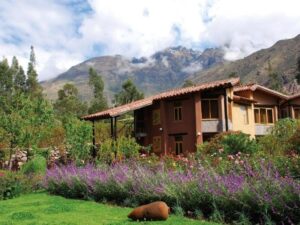
WILLKA TIKA HIGHLIGHTS
If laying in bed while hanging off an Andean cliff in a glass pod sounds like luxury, this is the spot for you. Skylodge Adventure Suites is an exclusive retreat geared for adventurous travelers looking for a truly unique natural experience. To access these luxury glass suites, handmade out of aerospace aluminum, guests must hike, zipline and climb. The suite itself features a dining area, four beds, and private bathroom.

SKYLODGE HIGHLIGHTS
This list of Sacred Valley Luxury Hotels beholds something for everyone. Maybe it’s a massage by the Urubamba River or quality time with loved ones in a villa in the mountains. Or perhaps it’s a yoga retreat in healing gardens or a historic experience at an ancient monastery. Or even a zipline adventure to a glass oasis or an epicurean rendezvous under the Andean stars. Whatever your idea of Sacred Valley luxury is, talk to your travel advisor and they will help plan the ultimate custom Peru vacation.
Want an in-depth insight into this trip? Essential Trip Information provides everything you need to know about this adventure and more.
View Essential Trip InformationThe best time to visit Peru is during the dry season, between May and November, when the weather is dry and bright, with more frequent rainfall occurring between November and April.
 JANUARY
JANUARY
 FEBUARY
FEBUARY
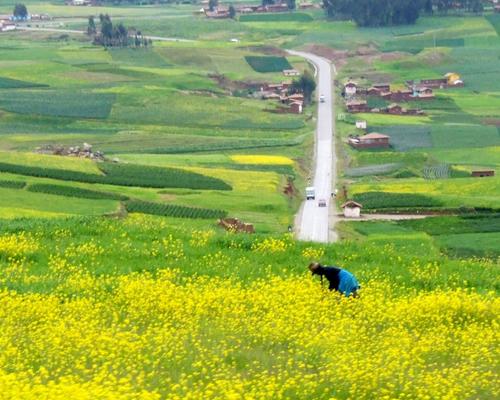 MARCH
MARCH
 APRIL
APRIL
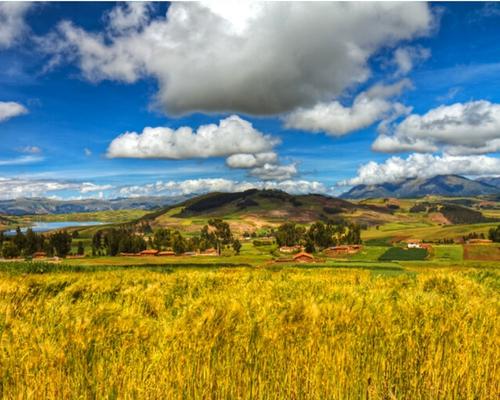 MAY
MAY
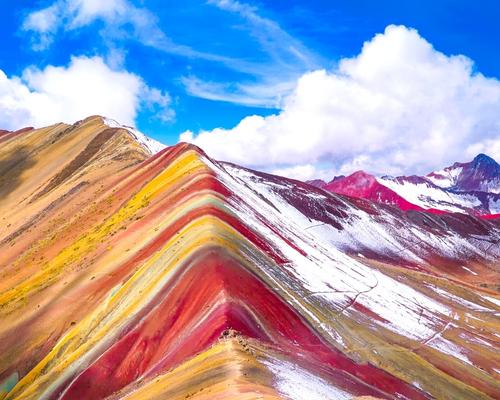 JUNE
JUNE
 JULY
JULY
 AUGUST
AUGUST
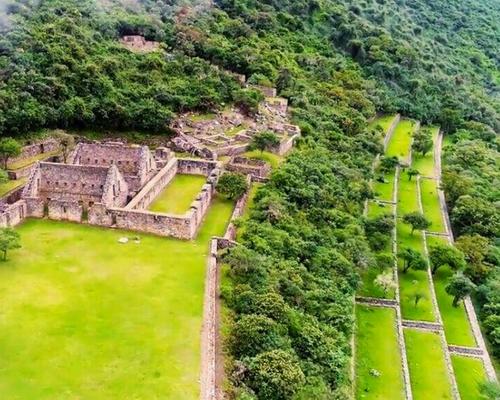 SEPTEMBER
SEPTEMBER
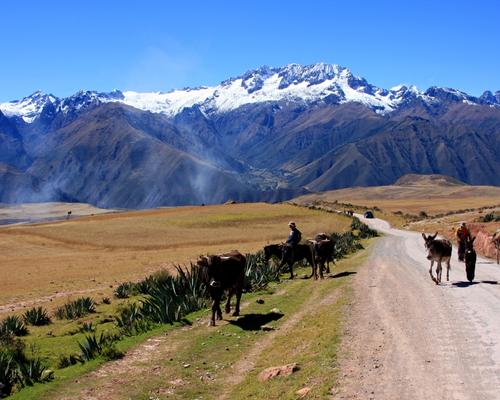 OCTOBER
OCTOBER
 NOVEMBER
NOVEMBER
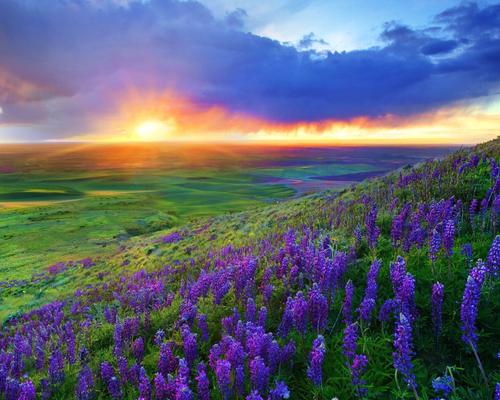 DECEMBER
DECEMBER
To book this tour, a minimum of $ 60 USD per person is required, the remaining balance will be paid upon arrival in Peru, at the Cusco office.
Any other additional information, please coordinate with your travel agent.
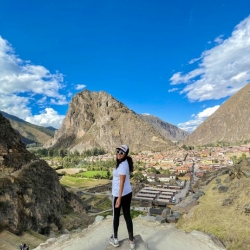
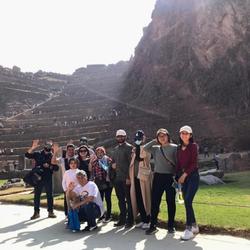

Nothing gets you closer to a country than walking through it, and we’ve got trips to suit walkers of all levels and interests.
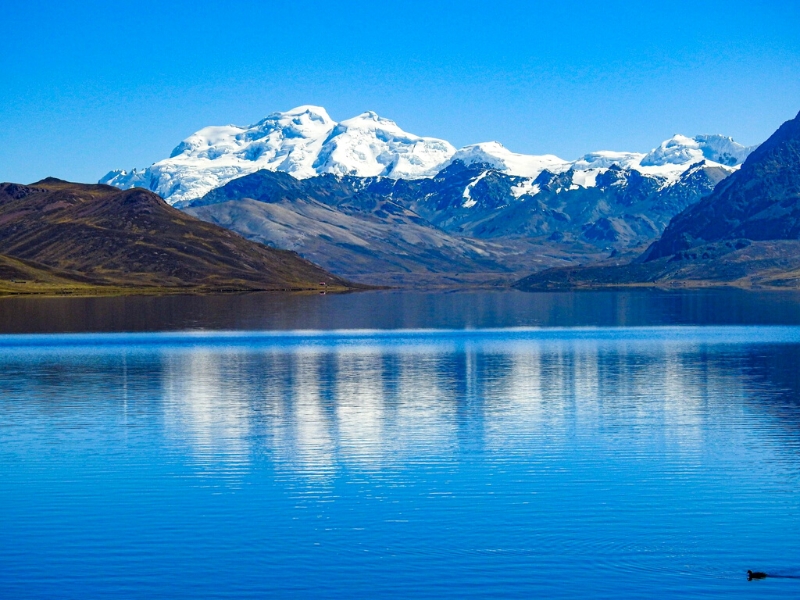
All our Walking trips are graded from ‘Easy’ through to ‘Challenging to Tough’. On our online trip itineraries you’ll find a chart showing the daily walk distances, timings and information on the route including the terrain, altitude. Generally, no specific training is needed but you might feel more comfortable if you’ve got out walking a few times in the lead-up to your trip.
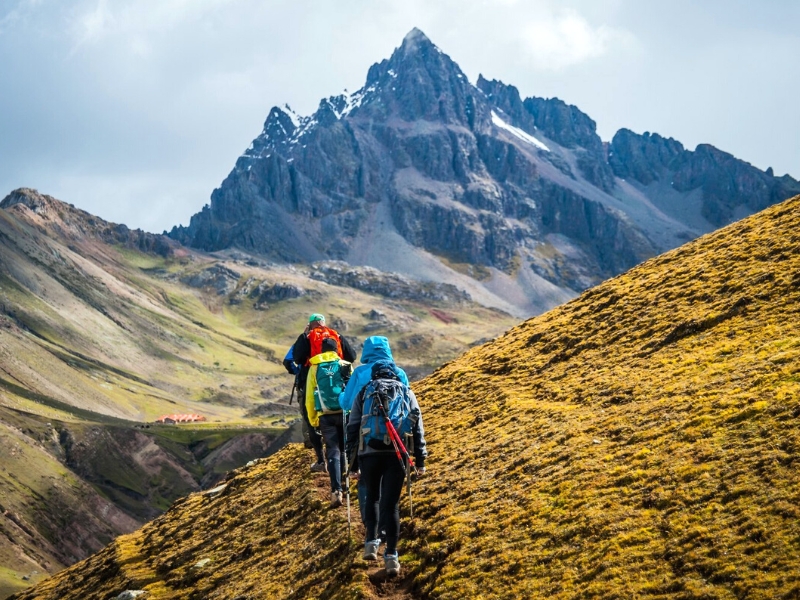
As with all our trips, every group is different but the ‘average’ group consists of roughly half couples and half solo travellers – all sharing a passion for exploring the world on foot. You’ll always have someone to keep you company along the route, but you don’t always have to walk together. Wherever possible your Andean Great Treks leader will allow everyone to walk at their own pace, regrouping regularly along the route.
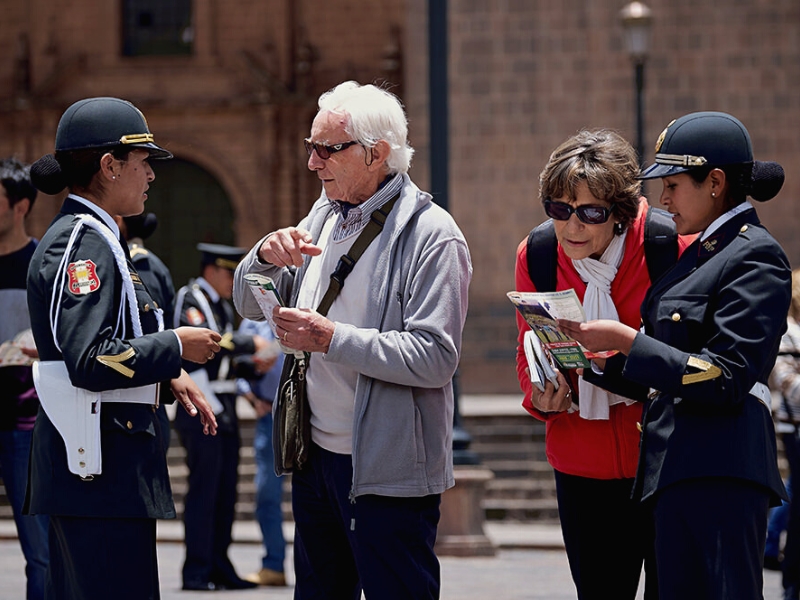
Like many other countries in developing destinations, the region’s beauty and uniqueness are countered by inequality and lack of investment. This has led to crime rates (mainly theft and scams) not being uncommon in the larger cities. We know this doesn’t sound very attractive, but it’s important to mention it regardless. Most experienced and well-traveled visitors will understand this well and not be too concerned. However, having said this, it is our duty to take care of you during your visit. That’s why we present you here with a few recommendations to be extra safe. Avoid walking alone at night on empty streets. Don’t flaunt valuables! If going for a walk or going on public transport, be sensible and avoid showing off expensive items such as expensive watches and jewelry. Be careful of pickpockets! Don’t leave your bags anywhere that doesn’t look safe, and make sure to take them with you.
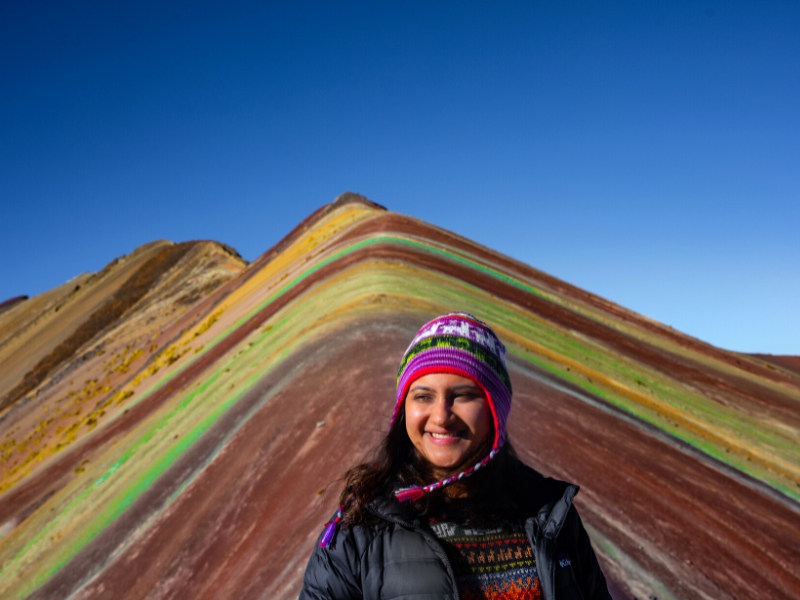
Soroche, or mountain sickness, is a reality for most people arriving in Cusco by plane from sea level and needs to be treated with respect. It’s vital to take it easy, not eating or drinking much on arrival, even sleeping a whole day just to assist acclimatization (coca tea is a good local remedy). After three days at this height most people have adjusted sufficiently to tackle moderate hikes at similar or lesser altitudes. Anyone considering hiking the major mountains around Cusco will need time to adjust again to their higher base camps.
If you do encounter altitude-related health problems, many hotels and restaurants have oxygen cylinders to help; alternatively, for serious cases, try call any of the clinics that are in Cusco, most of them have staff that speak English, for a greater facility in your attention it is recommended to have a travel insurance that covers medical expenses.
International flights to the capital city of Lima are plentiful but once there, you need to find a way to Cusco which is about 1100 km (684 miles) away. The quickest way to get to Cusco from Lima is to fly – it takes about 55 minutes. I don’t recommend traveling by bus because it takes about 24 hours – only do it if you intend to break the journey along the way, to visit other places.
Renting a car to travel from Lima to Cusco is not recommended. The roads are rough, and you could find yourself lost or face to face with one of the other dangers that come with traveling in unfamiliar territory.
The easiest way to explore the Sacred Valley from Cusco is on a guided full day tour that picks you up and drops you off from your hotel. The market in Pisac and Inca ruins in Ollantaytambo are the principal stops, though travelers with more time on their hands will find plenty more to see and do. It’s also possible to take a local bus or taxi into the Sacred Valley and do independent exploration.
Rainbow Mountain, or Vinicunca as it’s known by locals, has become a popular hike in the Cusco region. It’s possible to visit Rainbow Mountain in one (very long) day from Cusco or you can divide the trip into a two-day itinerary. While the hike isn’t very difficult and doesn’t have many steep inclines, Vinicunca is in a high elevation region (the highest part of the trail is 17,060 ft or 5,200 m) and you should spend time acclimating before starting the hike.
We are not afraid to say that Cusco is a place where every traveler ends up at least once during the trip around Peru, and it is hard to tell what is the right length of stay.
If your primary reason why to visit Cusco is to get to Machu Picchu, you still should spend here at least two days to acclimatize (despite the fact Machu Picchu is at a lower elevation than Cusco, some people still suffer from altitude sickness), and during this time you can explore the city and Sacred Valley.
From our personal experience, we think that the longer you can stay in Cusco it is better. Some travelers with limited time even revolve their entire itinerary around Cusco – this only proves how rich the city is in terms of sightseeing, architecture, and activities.
Cusco has so many things to see and do, not only within the city limits but mostly outside, that it is not a problem to spend here weeks. If you are flexible, sit down, and write down all one-day and multi-day treks you would like to do from Cusco, and you should get the optimal number of days for you.
There are so many things to see and do in Cusco and its surroundings that the city certainly deserves more than one day of your time.
To enjoy your days in Cusco the most, it is essential to choose the right accommodation. The good news is that Cusco has a great network of hotels for every type of traveler, from cheap hostels to luxurious mansions. That’s why your only job is to find a hotel in a location that suits you the best.
We recommend staying close to Centro Historico unless you want to stay away from crowds. We’ve selected the three best hotels in Cusco, so feel free to get inspired.
In recent years, Peruvian cuisine has gained popularity in the world’s culinary landscape, but for the freshest (and most authentic) specialty dishes, Cusco will not disappoint. Most Peruvian dishes carry big flavor not seen in other Latin and South American fare. You may have already tried popular dishes like ceviche (a cold dish of fresh raw fish with spicy citrus flavors) or lomo saltado (stir fried beef with fries). If you’re feeling a bit more adventurous, try Cuy (roasted guinea pig – yes, the American household pet) or charbroiled alpaca (also known as llama). Other delicious traditional dishes include adobo (a pork stew with corn beer), tamales, choclo con queso (boiled corn with local cheese) and the vegetarian stew capchi de setas. As far as vegetables go, Peru produces more than 4,000 varieties of potato, so you’ll find many dishes centered on them like papas a la huancaina (boiled potatoes with a spicy cheese sauce) and causa (a potato casserole with a variety of meat). Other staple veggies include corn and avocados. If your mouth isn’t watering yet, check your pulse.
For a taste of traditional dishes, head to PACHAPAPA or the award-winning CHICHA (visitors and locals recommend getting reservations well in advance). Peruvian cuisine often mingles with Asian influences, inspired by the culture brought by indentured servants and immigrants who came to Peru dating back to the original Spanish rule in the country. For a sampling of the Asian/Peruvian fusion cuisine, visit LIMO. If you’re really looking to splurge on a fine dining experience, try MAP Cafe. Located in the courtyard of the Pre-Columbian Art Museum in a glass shipping container, the fare is more contemporary Peruvian cuisine. You can also kick-start your day with coffee and breakfast at Jack’s Cafe, which serves breakfast all day. Many of the most popular restaurants are centrally located near Plaza de Armas.
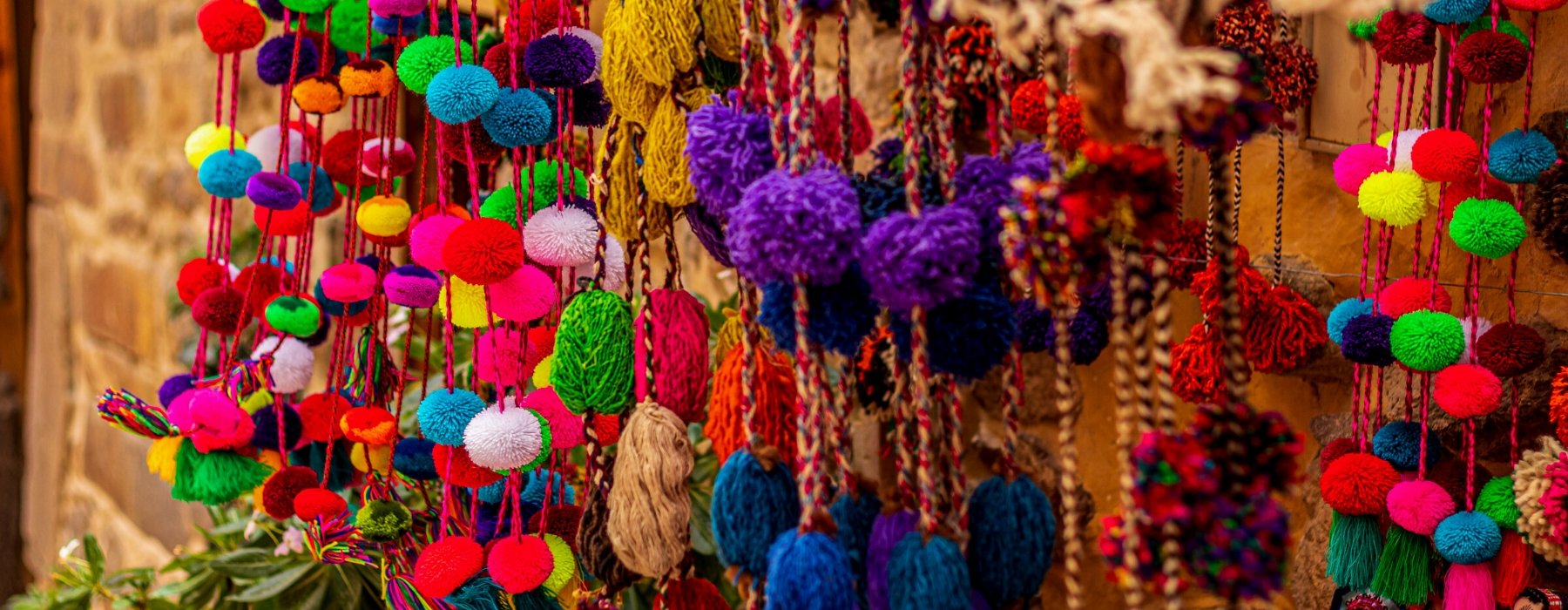
Every Andean Great Treks holiday has been thoughtfully planned and crafted by our specialists. They draw on their own extensive travel experience and the guidance and expertise of our local partners to create superb holidays. Our specialists are committed to making every aspect smooth and enjoyable; they genuinely want to ensure that the holidays they create leave you with wonderful lasting memories.
Every Andean Great Treks traveller is accompanied by an experienced tour guide, you will be immersed in Historic cities, ancient ruins and unfamiliar landscapes are all brought to life by our carefully selected local guides. They want to share their expertise and help you make your own discoveries too; their sole mission is to ensure you enjoy every moment.
Giving you the freedom to make your holiday even more memorable. We know how much our customers look forward to their holiday and we pride ourselves on the choice and flexibility that we offer to enhance every aspect of your experience. Whether it’s getting to the airport, upgrading your room or booking an additional excursion, we can help.

Our guides are the stars of the show; it is their unrivalled knowledge, passion and expertise that will transform your tour experience from good to truly extraordinary!
Because the have grown up in the area and know it like the back of their hand, so they can help you experience whichever aspects most interest you. They’re passionate about sharing their corner of the world with you, and as you explore together, they’ll open your eyes to the intricate details, provide background to enhance your understanding of what you’re seeing, and share stories that will bring everything to life.

“Your inspiration for a trip can be a single word or a highly evolved outline, but it’s the conversations we have that help us understand the experience you’re looking for. Meanwhile, I’m looking back on the time I spent at the destination.
‘The great thing about working with a specialist at Andean Great Treks is how they take your complete jumble of ideas and turn them into something absolutely spectacular.’
As you begin to share your ideas with your specialist, it will connect them immediately back to a time in their own travels. Conjuring a picture of the rest time they made that same discovery, reminding them how it felt.
Your specialist understands that, when the journey is right, it has the power to excite your emotions in the most profound ways after all, that was the effect on them.
They carry a treasure box of moments, captured over many journeys, into every suggestion they’ll share with you, as they ask you how you want to feel on your trip.

EXPERIENCES THAT CALL TO YOU
It’s what you do in a destination that helps bring it to life. It’s why we strive to choose experiences that help you connect to a place, absorbing a little of its complex character. Wherever your passions lie, we’ll recommend experiences that speak to you, and we’ll recommend the guide or local expert who’s most qualified to help you explore. Packing your holiday full of special experiences means some early starts and long days, but you can be sure that you’ll return home with many incredible memories! Read our Tours and check the Physical Ratings to see if the pace and activity levels are right for you.

STAYS WITH DIFFERENCE
We know that where you stay is a cherished part of your travels. So, we go to great lengths to find places to stay that exceed expectations, or go above and beyond the ordinary, whether in their character, hospitality, or location. Over the years, we’ve discovered the very best properties, trying and testing them, so we can choose the right one for you. We’ve nourished long-standing relationships with these establishments and the people who founded them, and we’ve stayed there many times often, we’ll even know which rooms have the best views (and reserve them for you).
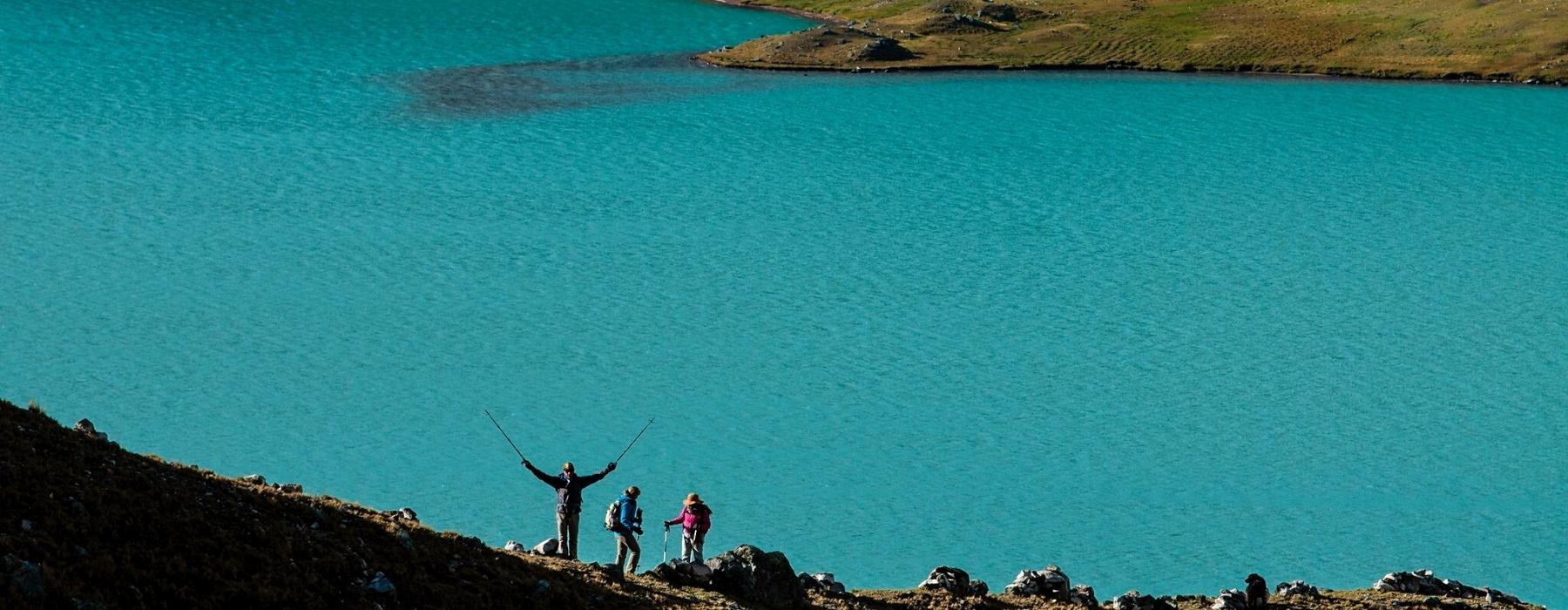
Our style of travel — authentic, thoughtful, and focused on building meaningful connections to the people and places you visit — is inherently respectful and considerate of the destinations we love. We design each aspect of your trip exactly as you want it, which includes its sustainability. That might mean choosing a train journey instead of a flight, staying at eco-friendly wildlife lodges, or opting for experiences that give back to the communities you’re visiting. The choice is yours.
Responsible travel has always been at the heart of what we do. First and foremost, because it gives you the best experience, but, also because it helps to preserve the communities and landscapes you visit. This isn’t new for us we collaborated with local communities and outside experts so we can grow to be better ambassadors.
The most authentic and interesting experiences often directly benefit the local people. We prefer to buy local products that are produced in the organic farms of the Sacred Valley, we also have alliances with local artisan organizations who provide us with souvenir items for our clients, your money directly benefits the local economy.
Our style of travel — authentic, thoughtful, and focused on building meaningful connections to the people and places you visit — is inherently respectful and considerate of the destinations we love. We design each aspect of your trip exactly as you want it, which includes its sustainability. That might mean choosing a train journey instead of a flight, staying at eco-friendly wildlife lodges, or opting for experiences that give back to the communities you’re visiting. The choice is yours.
Responsible travel has always been at the heart of what we do. First and foremost, because it gives you the best experience, but, also because it helps to preserve the communities and landscapes you visit. This isn’t new for us we collaborated with local communities and outside experts so we can grow to be better ambassadors.
The most authentic and interesting experiences often directly benefit the local people. We prefer to buy local products that are produced in the organic farms of the Sacred Valley, we also have alliances with local artisan organizations who provide us with souvenir items for our clients, your money directly benefits the local economy.
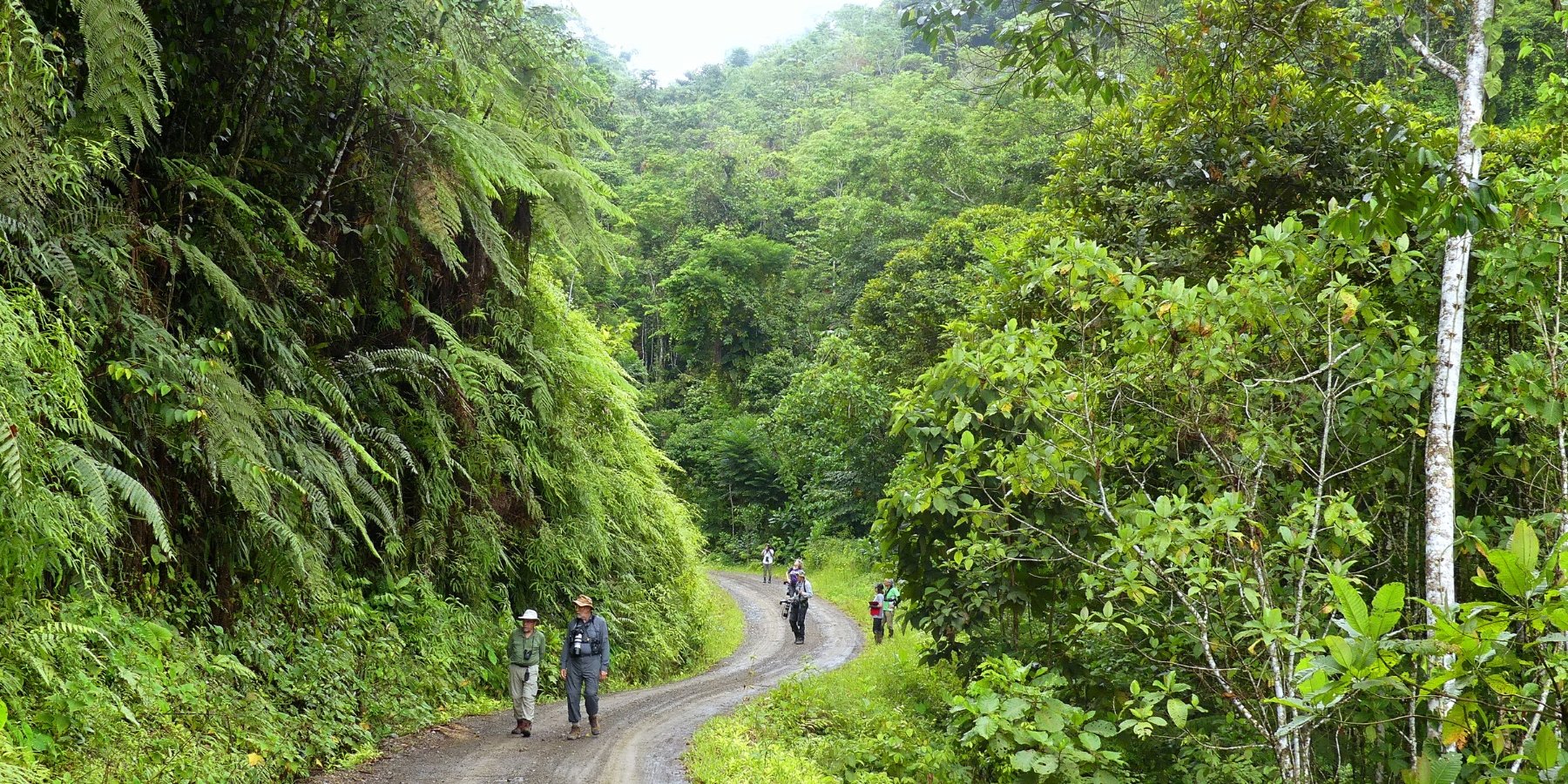
‘There’s a saying: we don’t inherit the Earth from our ancestors, we borrow it from our children. When we show you our country, this philosophy guides everything we do. It’s our responsibility to preserve the environment and wildlife, and support communities. That means using slower modes of transport, like cycling, employing local people, and working with communities who’ll benefit directly from your visit. This also gives you the best, most authentic impression of the places we want to share with you.
We prefer to buy local products in ecological bags, to avoid the use of plastic bags, likewise we teach the use of soaps and ecological products in each tour that we organize. We also work on reforestation projects with local communities who take care of landscape resources such as communal reserves, national parks.
‘There’s a saying: we don’t inherit the Earth from our ancestors, we borrow it from our children. When we show you our country, this philosophy guides everything we do. It’s our responsibility to preserve the environment and wildlife, and support communities. That means using slower modes of transport, like cycling, employing local people, and working with communities who’ll benefit directly from your visit. This also gives you the best, most authentic impression of the places we want to share with you.
We prefer to buy local products in ecological bags, to avoid the use of plastic bags, likewise we teach the use of soaps and ecological products in each tour that we organize. We also work on reforestation projects with local communities who take care of landscape resources such as communal reserves, national parks.
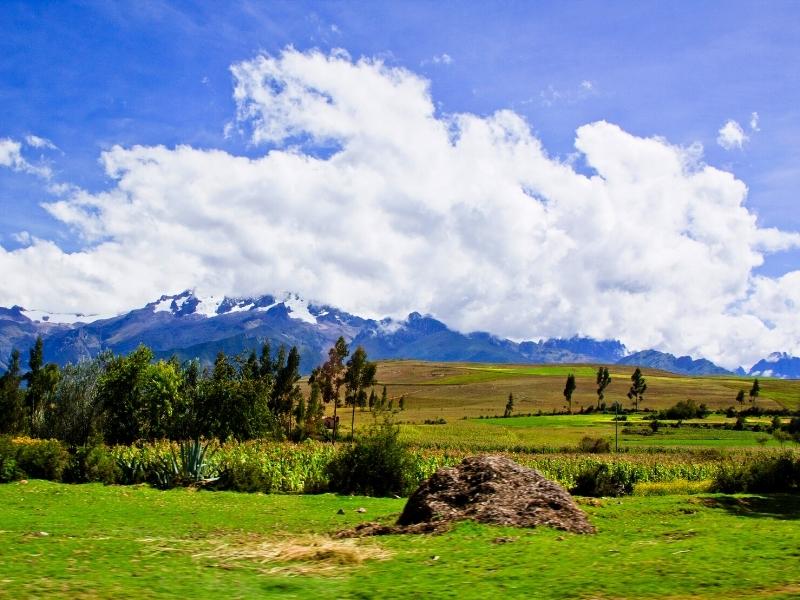
Explore the Sacred valley of the Incas, Visit the best archaeological remains of the Incas in Chinchero, Moray, Ollantaytambo and Pisac. Beautiful landscapes surrounded by snowy peaks and corn fields.

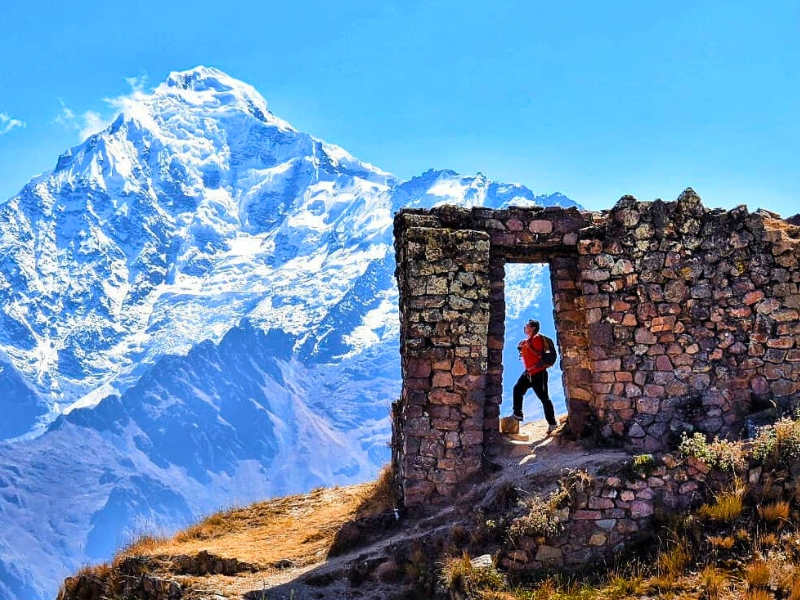
Visit the sacred gate of the Incas on the Cachichata mountain, from there you can enjoy beautiful views of the sacred valley of the Incas and its snow-capped peaks.
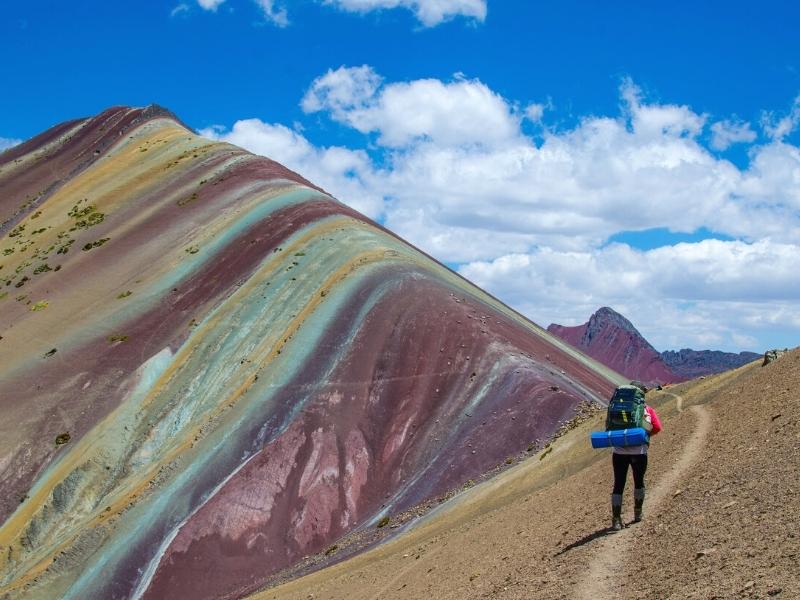
Explore the Vinicunca rainbow mountain tour, walk through the most beautiful mountains in Peru, surrounded by large snow-capped mountains, and herds of alpacas. Enjoy great views of the Red Valley, which will give you a feeling of being on the planet Mars.